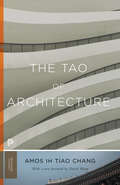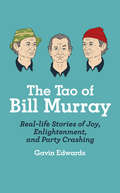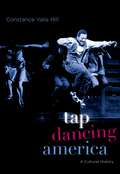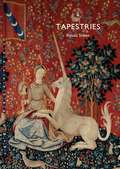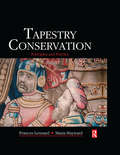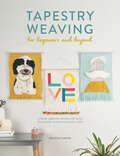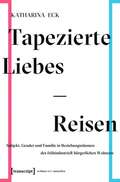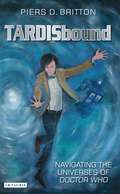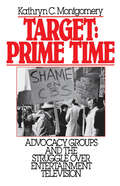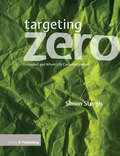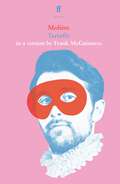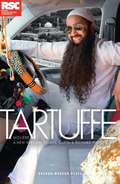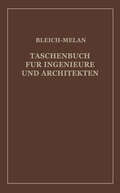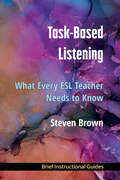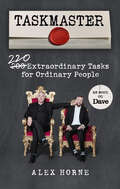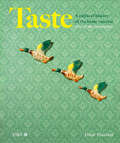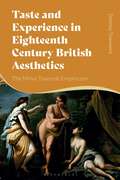- Table View
- List View
The Tao of Architecture
by Amos Ih Chang David WangFrank Lloyd Wright first noted the affinity between modern Western architecture and the philosophy of the ancient Chinese writer Laotzu. In this classic work, Amos Ih Tiao Chang expands on that idea, developing the parallel with the aid of architectural drawings and Chinese paintings. Now with a new foreword by David Wang, this book reveals the vitality of intangible, or negative, elements. Chang writes that these qualities make architectonic forms "come alive, become human, naturally harmonize with one another, and enable us to experience them with human sensibility." The Tao of Architecture continues to be essential reading for understanding the intersection between architecture and philosophy.
The Tao of Bill Murray: Real-Life Stories of Joy, Enlightenment, and Party Crashing
by Gavin EdwardsPeople love Bill Murray movies, but even more, they love crazy stories about Bill Murray out in the world. Bill reads poetry to construction workers. Bill joins in strangers' kickball games. Bill steals a golf cart in Stockholm. Bill follows the Roots – a hip hop band – around. Bill pays a kid $5 to ride his bicycle into a swimming pool. The most popular Bill Murray story of all time (which he will neither confirm nor deny): on a crowded street, he puts his hands over a stranger's eyes from behind and says "Guess who?" When he lifts his hands to reveal his identity as Bill Murray, he tells the gobsmacked stranger, "No one will ever believe you."For The Tao of Bill Murray: Real-Life Stories of Joy, Enlightenment, and Party Crashing, best-selling author Gavin Edwards tracked down the best authentic Bill Murray stories. People savour these anecdotes; they consume them with a bottomless hunger; they routinely turn them into viral hits.The book not only has the greatest hits of Bill's eye-opening interactions with the world, it puts them in the context of a larger philosophy (revealed to the author in an exclusive interview): Bill Murray is secretly teaching us all how to live our lives.
Tap Dancing America: A Cultural History
by Constance Valis HillHere is the vibrant, colorful, high-stepping story of tap -- the first comprehensive, fully documented history of a uniquely American art form, exploring all aspects of the intricate musical and social exchange that evolved from Afro-Irish percussive step dances like the jig, gioube, buck-and-wing, and juba to the work of such contemporary tap luminaries as Gregory Hines, Brenda Bufalino, Dianne Walker, and Savion Glover. In Tap Dancing America, Constance Valis Hill, herself an accomplished jazz tap dancer, choreographer, and performance scholar, begins with a dramatic account of a buck dance challenge between Bill "Bojangles" Robinson and Harry Swinton at Brooklyn's Bijou Theatre, on March 30, 1900, and proceeds decade by decade through the 20th century to the present day. She vividly describes tap's musical styles and steps -- from buck-and-wing and ragtime stepping at the turn of the century; jazz tapping to the rhythms of hot jazz, swing, and bebop in the '20s, '30s and '40s; to hip-hop-inflected hitting and hoofing in heels (high and low) from the 1990s right up to today. Tap was long considered "a man's game," and Hill's is the first history to highlight such outstanding female dancers as Ada Overton Walker, Kitty O'Neill, and Alice Whitman, at the turn of the 20th century, as well as the pioneering women composers of the tap renaissance, in the 70s and 80s, and the hard-hitting rhythm-tapping women of the millennium such as Chloe Arnold, Ayodele Casel, Michelle Dorrance, and Dormeshia Sumbry Edwards. Written with uncanny foresight, the book features dancers who have become international touring artists and have performed on Broadway, won Emmy and Tony Awards, and received the prestigious Dance Magazine, Adele and Fred Astaire, and Jacob's Pillow Dance awards. Presented with all the verve and grace of tap itself and drawing on eyewitness accounts of early performances as well as interviews with today's greatest tappers, Tap Dancing America fills a major gap in American dance history and places tap firmly center stage.
Tap Dancing America: A Cultural History
by Constance Valis HillHere is the vibrant, colorful, high-stepping story of tap -- the first comprehensive, fully documented history of a uniquely American art form, exploring all aspects of the intricate musical and social exchange that evolved from Afro-Irish percussive step dances like the jig, gioube, buck-and-wing, and juba to the work of such contemporary tap luminaries as Gregory Hines, Brenda Bufalino, Dianne Walker, and Savion Glover. In Tap Dancing America, Constance Valis Hill, herself an accomplished jazz tap dancer, choreographer, and performance scholar, begins with a dramatic account of a buck dance challenge between Bill "Bojangles" Robinson and Harry Swinton at Brooklyn's Bijou Theatre, on March 30, 1900, and proceeds decade by decade through the 20th century to the present day. She vividly describes tap's musical styles and steps -- from buck-and-wing and ragtime stepping at the turn of the century; jazz tapping to the rhythms of hot jazz, swing, and bebop in the '20s, '30s and '40s; to hip-hop-inflected hitting and hoofing in heels (high and low) from the 1990s right up to today. Tap was long considered "a man's game," and Hill's is the first history to highlight such outstanding female dancers as Ada Overton Walker, Kitty O'Neill, and Alice Whitman, at the turn of the 20th century, as well as the pioneering women composers of the tap renaissance, in the 70s and 80s, and the hard-hitting rhythm-tapping women of the millennium such as Chloe Arnold, Ayodele Casel, Michelle Dorrance, and Dormeshia Sumbry Edwards. Written with uncanny foresight, the book features dancers who have become international touring artists and have performed on Broadway, won Emmy and Tony Awards, and received the prestigious Dance Magazine, Adele and Fred Astaire, and Jacob's Pillow Dance awards. Presented with all the verve and grace of tap itself and drawing on eyewitness accounts of early performances as well as interviews with today's greatest tappers, Tap Dancing America fills a major gap in American dance history and places tap firmly center stage.
Tapestries (Shire Library)
by Rosita SheenTapestries have been an enigmatic form of artwork for hundreds of years, with the intricate symbolism of their woven narratives still fascinating viewers today. Unicorns and fantastic beasts rub shoulders with well-heeled aristocrats; famous biblical and saintly stories are played out; allegorical figures, gods and goddesses recline in classical landscapes; and the arms and military achievements of wealthy patrons are depicted in sparkling glory. However, far from being an outdated craft, tapestries continue to be woven to this day, both by talented amateurs in their homes and by highly skilled artisans in studios and workshops around the world. In this beautiful illustrated introduction to the history of tapestries, Rosita Sheen reveals the fascinating story of these masterpieces, exploring their conception, manufacture, and symbolism right up to the present day.
Tapestries (Shire Library #868)
by Rosita SheenTapestries have been an enigmatic form of artwork for hundreds of years, with the intricate symbolism of their woven narratives still fascinating viewers today. Unicorns and fantastic beasts rub shoulders with well-heeled aristocrats; famous biblical and saintly stories are played out; allegorical figures, gods and goddesses recline in classical landscapes; and the arms and military achievements of wealthy patrons are depicted in sparkling glory. However, far from being an outdated craft, tapestries continue to be woven to this day, both by talented amateurs in their homes and by highly skilled artisans in studios and workshops around the world. In this beautiful illustrated introduction to the history of tapestries, Rosita Sheen reveals the fascinating story of these masterpieces, exploring their conception, manufacture, and symbolism right up to the present day.
Tapestry Conservation: Principles and Practice
by Frances Lennard Maria HaywardTapestry Conservation: Principles and Practice explores current practice and recent research in tapestry conservation, promoting awareness of recent developments among conservators and custodians of tapestries. The book facilitates more informed conservation practice and decision-making, and helps custodians to select the most appropriate method of intervention.
Tapestry Conservation: Principles and Practice
by Frances Lennard Maria HaywardTapestry Conservation: Principles and Practice explores current practice and recent research in tapestry conservation, promoting awareness of recent developments among conservators and custodians of tapestries. The book facilitates more informed conservation practice and decision-making, and helps custodians to select the most appropriate method of intervention.
Tapestry Weaving for Beginners and Beyond: Create graphic woven art with this guide to painting with yarn
by Kristin CarterLearn to weave your own stories and make personalised woven wall art with this guide to tapestry weaving. A collection of wonderful woven hangings for you to build your tapestry weaving skills. Learn all the techniques you'll need to create your own woven tapestries with a unique, personalised element. Author, Kristin Carter, explains all the skills required to make heirloom woven wall art with a very personal theme and how to recreate images of people, pets and places to create your own ‘paintings with thread’. Learn all the basic techniques for tapestry weaving including a quick and easy way to make your own loom using an old photo frame, how to choose the right yarn, working with a template and how to start off a weave. Kristin then explores all the tapestry weaving techniques you will need to make your own stunning wall hangings. All of these techniques are accompanied by step-by-step photography so the instructions are super clear and suitable for absolute beginners. Learn how to do rya loops, weft facing weaving, soumak, pile weaving, diamond twill, overweaving, boubles, and an inverted rya fringe. There are 17 incredible projects for you to experiment and try out your new skills. Each of these can be adapted in order to create your own personalised wall hangings so you can make special heirloom woven art for friends and family. Kristin explains how to set up the loom, gives guidance for yarn amounts and what other tools and equipment are needed for each project. All of the projects are suitable for a an A3 sized loom so you only need one size to try out all of the variations. There are projects for abstract patterns, gradient weaving, blending compatible yarns, pet and people portraits with special techniques for recreating the texture of fur and hair, how to play with transparency in a weaving and creating texture using different yarns. Other techniques covered include cartooning (how to make a cartoon template from photographs); creating templates from your own sketches, how to create a marble effect and advice about colour theory and weaving.
Tapezierte Liebes-Reisen: Subjekt, Gender und Familie in Beziehungsräumen des frühindustriell-bürgerlichen Wohnens (wohnen+/-ausstellen #4)
by Katharina EckFranzösische Bildtapeten aus der Manufaktur von Joseph Dufour fanden seit dem frühen 19. Jahrhundert in Interieurs in ganz Europa als begehrtes Ausstattungsobjekt Verwendung - vor allem in bildungsbürgerlichen Haushalten. Katharina Eck stellt die drei großformatigen Tapeten zu »Amor und Psyche«, »Telemach auf der Insel der Calypso« und »Paul und Virginie« in den Fokus ihrer Analysen. In einer transdisziplinären Studie (Literatur- und Kunstwissenschaft) untersucht sie die Geschlechter- und Paarbildungsdidaktiken in den Tapetenszenen - wie auch das »in richtigen Bahnen verlaufende« Sexualitätsdispositiv - zusammen mit den Praktiken des Wohnens und der Geselligkeit um 1800. Sie entwickelt Analyseachsen, die das »In-Beziehung-Setzen« mit den tapezierten Räumen und deren performatives Potenzial erstmalig in dieser anschaulichen Form ausloten.
TARDISbound: Navigating the Universes of Doctor Who
by Piers D. BrittonDoctor Who has always thrived on multiplicity and transformation. In the last two decades, it has grown dramatically in scope and complexity, migrating from television to other media universes. By 2009, Doctor Who was being produced in three different media, with six actors simultaneously playing the role of the Doctor.TARDISbound addresses the full range of Doctor Who texts, including the hitherto neglected audio-adventures and original novel ranges. Piers Britton examines distinctive and shared eatures of the Doctor Who texts in different media, and offers a critique of issues such as class, gender and the monstrous across those texts. He also explores the aesthetics and the ethical implications of this uniquely multifarious fantasy narrative.
TARDISbound: Navigating the Universes of Doctor Who
by Piers D. Britton'Doctor Who' has always thrived on multiplicty, unpredictability and transformation, it's worlds and characters kaleidoscopic and shifting, and 'Doctor Who"s complexity has grown. With its triumphant return to TV in 2005, it was made up of four different fictional forms, across three different media, with five actors simultaneously playing the eponymous hero. 'TARDISbound' is the first book to deal both with the TV series and with the 'audio adventures', original novels, and short story anthologies produced since the 1990s, engaging with the common elements of these different texts and with distinctive features of each. 'TARDISbound' places 'Doctor Who' under a variety of lenses, from examining the leading characteristics of these 'Doctor Who' texts, to issues of class, ethnicity and gender in relation to the Doctor(s), other TARDIS crew-members, and the non-human/inhuman beings they encounter. 'TARDISbound' also addresses major questions about the aesthetics and ethical implications of 'Doctor Who'.
Target: Advocacy Groups and the Struggle Over Entertainment Television (Communication and Society)
by Kathryn C. MontgomeryOffering the first book-length exploration of network television's relations with advocacy groups, Kathryn C. Montgomery presents a comprehensive picture of the impact of organized pressure on prime-time TV. She vividly describes, for example, how the Catholic Church campaigned against Maude's abortion on the TV show, Maude; how outraged actors mobilized a national protest against the portrayal of blacks in the TV miniseries, Beulah Land; and how the Moral Majority waged a sophisticated campaign to "clean up TV," by threatening to boycott advertisers. Exposing the inner workings of network television as no other book has done, Montgomery's study demonstrates how behind-the-scenes struggles have shaped the images, messages, and values that enter people's homes every night. The book also raises critical questions about television's role in our society and its responsibility to the American public.
Targeting Zero: Whole Life and Embodied Carbon Strategies for Design Professionals
by Simon SturgisEmbodied and Whole Life Carbon will change the way buildings are designed, yet carbon emissions associated with the construction and life of buildings are not yet wholly understood by the profession. Energy is assumed to be the province of services engineers, yet energy from materials is as big an issue. Architects have the opportunity to take the lead in redefining how buildings are designed to achieve a low carbon future.
Targeting Zero: Whole Life and Embodied Carbon Strategies for Design Professionals
by Simon SturgisEmbodied and Whole Life Carbon will change the way buildings are designed, yet carbon emissions associated with the construction and life of buildings are not yet wholly understood by the profession. Energy is assumed to be the province of services engineers, yet energy from materials is as big an issue. Architects have the opportunity to take the lead in redefining how buildings are designed to achieve a low carbon future.
Tartuffe
by Frank McGuinnessLet's see how crafty a picture you paint. You're making a demon out of a saint.In this spectacular dramatic comedy, the villainous Tartuffe shocks and enthrals with his deceptive powers. Charming to some, a danger to others, one family risks losing everything if he gets his way. Molière's exuberant seventeenth-century classic is brought back to life in an audacious contemporary Irish version by Frank McGuinness. Tartuffe premiered at the Abbey Theatre, Dublin, in March 2023.
Tartuffe (Oberon Modern Plays)
by Molière Anil Gupta Richard PintoA brand-new version of Molière’s provocative French classic, relocated to present-day Birmingham’s Pakistani Muslim community.The well-off Pervaiz household, living in modern Birmingham, are in uproar. Dad, Imran, has welcomed in the charismatic and devout Tahir Taufiq Arsuf, or Tartuffe to the sceptical. Imran’s new wife, Amira, is isolated from the children and under fire from her ferocious mother-in-law, Dadimaa. Darina, the Bosnian maid, knows where the dirt is hidden, and can be trusted to clean up after – until now…Will Tartuffe succeed in winning the souls of the family, getting the son kicked out, marrying the daughter and having it off with the wife? Or can Darina, with the help of Amira, find a way to save Imran from himself and heal the family?Molière’s classic is brought bang up-to-date in this new version by BAFTA and Emmy-Award winning writers, Anil Gupta and Richard Pinto (The Office, Goodness Gracious Me, The Kumars at No. 42).
Taschenbuch für Ingenieure und Architekten
by H. Baudisch Fr. Bleich Alfred Haerpfer L. Huber P. Kresnik J. Melan F. SteinerDieser Buchtitel ist Teil des Digitalisierungsprojekts Springer Book Archives mit Publikationen, die seit den Anfängen des Verlags von 1842 erschienen sind. Der Verlag stellt mit diesem Archiv Quellen für die historische wie auch die disziplingeschichtliche Forschung zur Verfügung, die jeweils im historischen Kontext betrachtet werden müssen. Dieser Titel erschien in der Zeit vor 1945 und wird daher in seiner zeittypischen politisch-ideologischen Ausrichtung vom Verlag nicht beworben.
Task-Based Listening: What Every ESL Teacher Needs to Know
by Steven BrownAre you looking for activities to use in your listening classes beyond asking students to answer comprehension questions? In Task-Based Listening, author Steven Brown defines task-based listening (TBL) and describes how to build a task-based listening program, how to create a task-based listening lesson, ways to activate vocabulary acquisition and improve grammatical knowledge, and the links between listening and pronunciation. In addition, he covers the ways that metacognitive strategies can assist students when listening, the advantages of extensive listening, and the benefits of interactive listening. Readers will find specific tips and suggestions for using these concepts in the classroom.
Task-Based Listening: What Every ESL Teacher Needs to Know
by Steven BrownAre you looking for activities to use in your listening classes beyond asking students to answer comprehension questions? In Task-Based Listening, author Steven Brown defines task-based listening (TBL) and describes how to build a task-based listening program, how to create a task-based listening lesson, ways to activate vocabulary acquisition and improve grammatical knowledge, and the links between listening and pronunciation. In addition, he covers the ways that metacognitive strategies can assist students when listening, the advantages of extensive listening, and the benefits of interactive listening. Readers will find specific tips and suggestions for using these concepts in the classroom.
Taskmaster: 200 Extraordinary Tasks for Ordinary People
by Alex HorneBuild yourself a box and think outside of it. Your time starts now …In the TV show and on my marriage certificate, my job description is ‘Taskmaster’s Assistant’. That’s what I do and it’s an honour. I like Taskmaster a lot. And, of course, I love The Taskmaster. He’s mountainous. If you feel in any way the same as me then you should enjoy this book.There are tasks for you, your friends and your family. There are secret things and sneaky tricks. And there is one swear word. So it’s almost exactly like being on the show.Good luck. Make good choices. Let’s do Him proud.Alex HorneTaskmaster’s Assistant
Taste: A cultural history of the home interior
by Drew PlunkettDemocratic in intention and approach, the book will argue that the home interior, as independently created by the ‘amateur’ householder, offers a continuous informal critique of shifting architectural styles (most notably with the advent of Modernism) and the design mainstream. Indeed, it will suggest that the popular increasingly exerts an influence on the professional. Underpinned by academic rigour, but not in thrall to it, above all this book is an engaging attempt to identify the cultural drivers of aesthetic change in the home, extrapolating the wider influence of ‘taste’ to a broad audience – both professional and ‘trade’. In so doing, it will explore enthralling territory – money, class, power and influence. Illustrated with contemporary drawings and cartoons as well as photos, the book will not only be an absorbing read, but an enticing and attractive object in itself.
Taste: A cultural history of the home interior
by Drew PlunkettDemocratic in intention and approach, the book will argue that the home interior, as independently created by the ‘amateur’ householder, offers a continuous informal critique of shifting architectural styles (most notably with the advent of Modernism) and the design mainstream. Indeed, it will suggest that the popular increasingly exerts an influence on the professional. Underpinned by academic rigour, but not in thrall to it, above all this book is an engaging attempt to identify the cultural drivers of aesthetic change in the home, extrapolating the wider influence of ‘taste’ to a broad audience – both professional and ‘trade’. In so doing, it will explore enthralling territory – money, class, power and influence. Illustrated with contemporary drawings and cartoons as well as photos, the book will not only be an absorbing read, but an enticing and attractive object in itself.
Taste and Experience in Eighteenth-Century British Aesthetics: The Move toward Empiricism
by Dabney TownsendTaste and Experience in Eighteenth Century Aesthetics acknowledges theories of taste, beauty, the fine arts, genius, expression, the sublime and the picturesque in their own right, distinct from later theories of an exclusively aesthetic kind of experience. By drawing on a wealth of thinkers, including several marginalised philosophers, Dabney Townsend presents a novel reading of the century to challenge our understanding of art and move towards a unique way of thinking about aesthetics. Speaking of a proto-aesthetic, Townsend surveys theories of taste and beauty arising from the empiricist shift in philosophy. A proto-aesthetic was shaped by the philosophers who followed Locke and accepted that theories of taste and beauty must be products of experience alone. Francis Hutcheson, David Hume, Alexander Gerard and Thomas Reid were among the most important advocates, joined by others who re-thought traditional topics. Featuring chapters tracing its philosophical principles, issues raised by the subjectivity of the empiricist approach and the more academic proto-aesthetic formed toward the end of the century, Townsend argues that Lockean empiricism laid the foundations for what we now call aesthetics.
Taste and Experience in Eighteenth-Century British Aesthetics: The Move toward Empiricism
by Dabney TownsendTaste and Experience in Eighteenth Century Aesthetics acknowledges theories of taste, beauty, the fine arts, genius, expression, the sublime and the picturesque in their own right, distinct from later theories of an exclusively aesthetic kind of experience. By drawing on a wealth of thinkers, including several marginalised philosophers, Dabney Townsend presents a novel reading of the century to challenge our understanding of art and move towards a unique way of thinking about aesthetics. Speaking of a proto-aesthetic, Townsend surveys theories of taste and beauty arising from the empiricist shift in philosophy. A proto-aesthetic was shaped by the philosophers who followed Locke and accepted that theories of taste and beauty must be products of experience alone. Francis Hutcheson, David Hume, Alexander Gerard and Thomas Reid were among the most important advocates, joined by others who re-thought traditional topics. Featuring chapters tracing its philosophical principles, issues raised by the subjectivity of the empiricist approach and the more academic proto-aesthetic formed toward the end of the century, Townsend argues that Lockean empiricism laid the foundations for what we now call aesthetics.
